
About three years ago I started taking photos of people at work. Since then I have photographed hundreds of workers – from butchers and bakers and candy makers to clowns and sculptors and fire eaters.
I have especially focused on two groups of workers. One group is Dayton artists working in their studios, the subject of this blog. The other group is workers in some of the region’s oldest factories. Many of those photos have been shown in art exhibitions in Ohio and neighboring states. Paul Henry Martin is the first person I’ve met that fits into both of these groups.
I met Paul at Gerstner & Sons, in a plant that has been making wooden tool chests since 1913. The plant’s customer list includes the Wright Brothers.

Paul is Gerstner’s top Woodworker. He repairs older cases that have become family heirlooms and he makes special wood cases. Here he is showing me a case that will house someone’s prize shotguns.
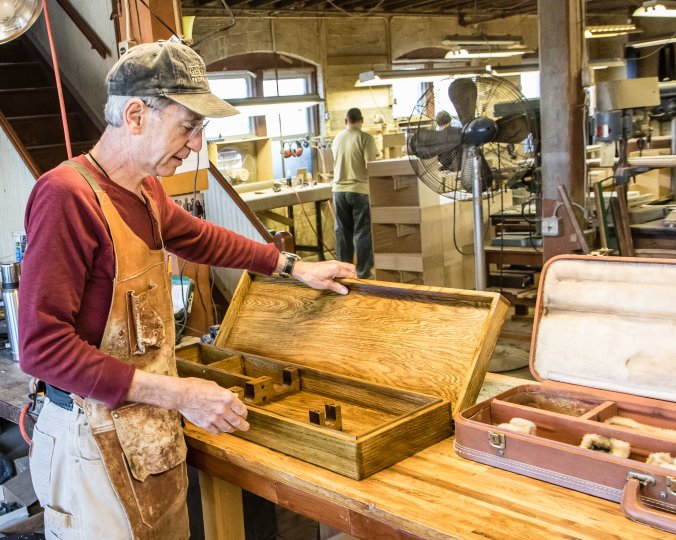
Paul’s studio is in his home in Spring Valley. Paul told me it needed a lot of work when he bought it, but it is now a lovely home.
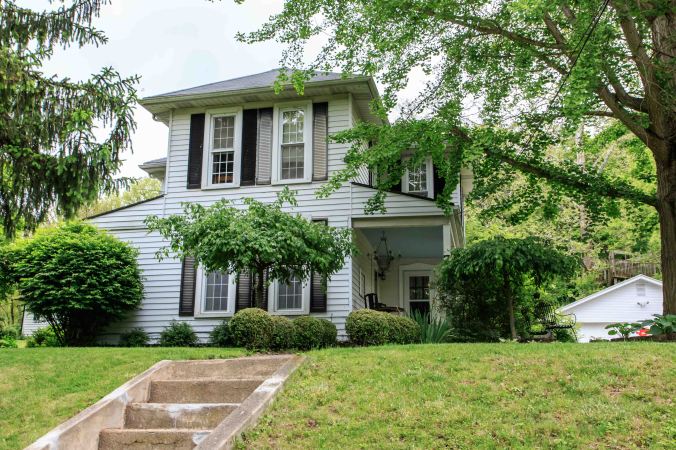
One reason that Paul bought this property was that it had two extra buildings. One is now an art studio for Paul’s wife. The other is a place where Paul works as a luthier, making violins and guitars.
In his youth, Paul played the guitar. He started fixing guitars when he was in college and then made this instrument soon after he graduated.

The instruments Paul makes today are special because the wood is special. He calls what he does “Character Woodworking.” In his own words, “my idea is to capture and understand the character and the story of certain pieces of wood and then to use those pieces to make fiddles and guitars.”
Paul explained to me that he needs softwood for the tops of his instruments and hardwood for the sides and bottom. He was just getting started on two guitars which will use the softwood from this Scotch whiskey box.

Some of the hardwood for the back and sides of these guitars will be from a mahogany dining room table. People grew up around this table. This wood has stories to tell.
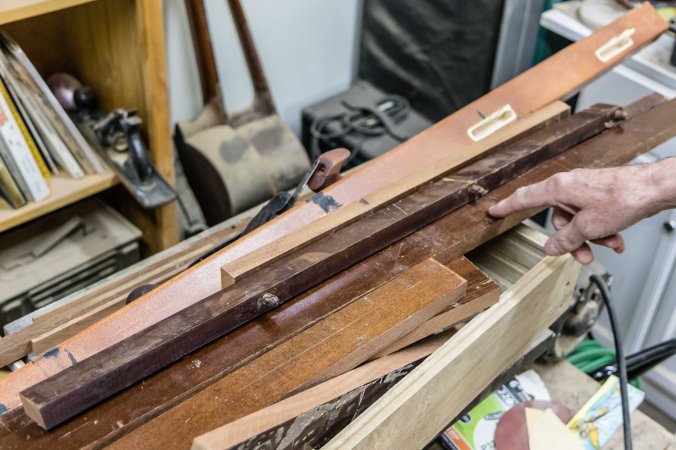
I noticed a saying of St. Francis on the studio wall:
He who works with his hands is a laborer.
He who works with his hands and his head is a craftsman.
He who works with his hands and his head and his heart is an artist.
I asked Paul where he fits into that spectrum.
“I guess I am an artist as I select wood that has a story to tell. Then I have to be craftsman enough to make an instrument that can tell that story.”
I noticed an outline of one of the Stradivarius violins on the wall.

“I have studied how Stradivarius made such amazing instruments, and I’ve tried to follow in his footsteps. My approach to gluing and to finishing the instrument is as close to his approach as possible.”
As we talked, Paul started cutting wood pieces.
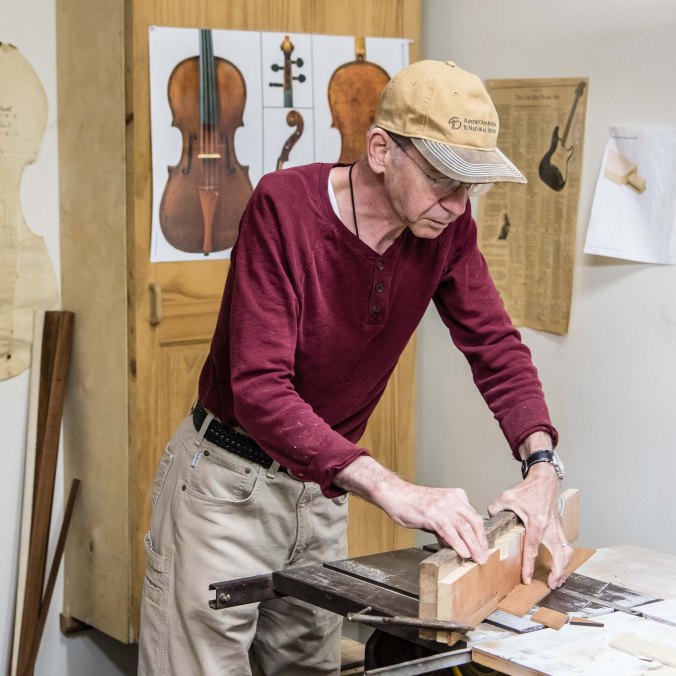
Then he assembled the pieces into a decorative pattern that will form the back of the guitars.
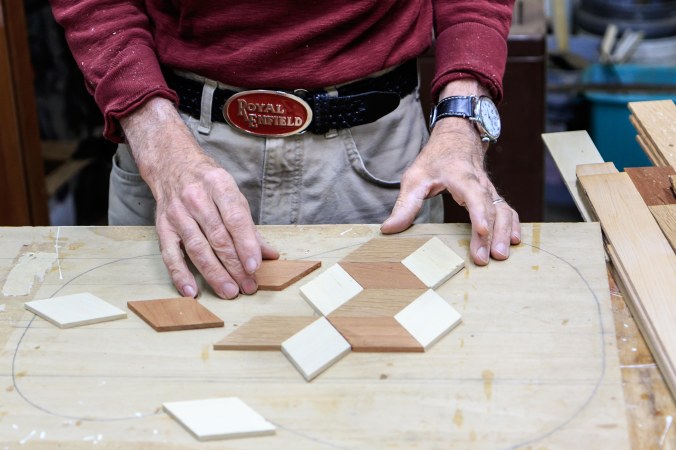
I asked Paul if I could see some of his finished instruments. He said they were inside the house. On the way he showed me his wife’s studio.
Paul met his wife Barbara when she was a student at the Cleveland Institute of Art. She is now a teacher, and makes art in her spare time. When I visited she was just starting to work on an art series that might be a project for her summer break. l
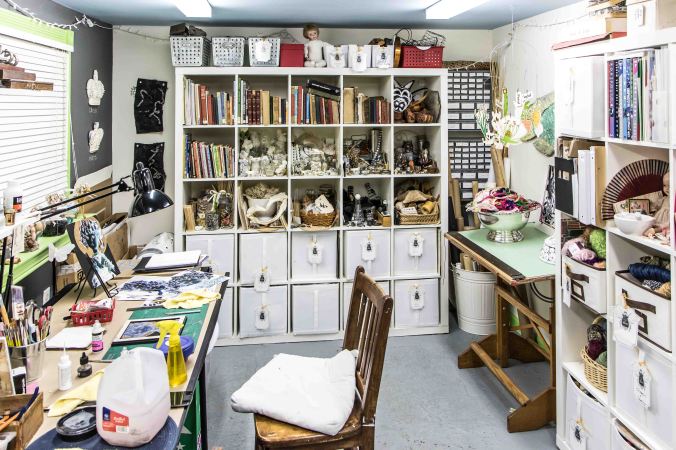
In the house we looked at three of Paul’s finished instruments. This one is special because it is made from the oldest workable wood in the world.
The Kauri tree is native to New Zealand and is among the largest and oldest growing trees in the world. Living Kauri trees are protected, but this Kauri fell into a peat swamp more than 45,000 years ago.
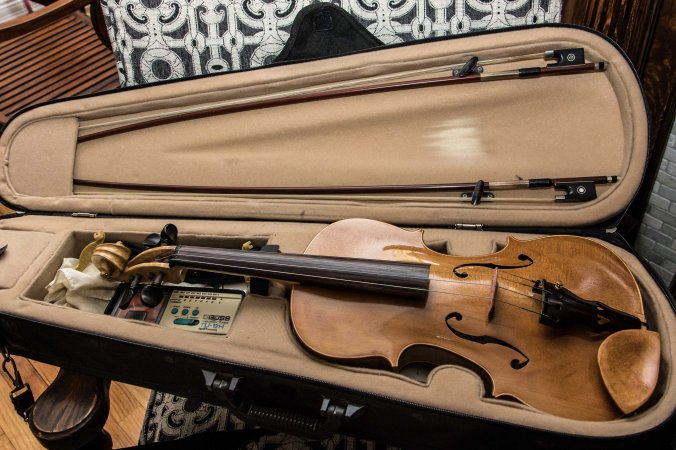
This violin comes from the Shambaugh farmhouse. When it was torn down Paul got some softwood from the pillars on the front porch and hardwood from the dining room floors.

Finally Paul showed me his personal guitar. I asked him to tell me about it.
“Years ago I played with a band in a lot of small bars. The music was great but then came the hardest part, packing up and driving home. Too many beers made that job hard so we’d drink coffee. Every once in a while we’d ask the bartender to throw a shot of Drambuie into our coffee.
“Years later I’m walking through a flea market and saw a Drambuie box. So many wonderful memories came flooding back. I knew exactly how I could use it.
“Around that same time my mother told me that the old tree behind our house was being cut down. I asked her to hang onto a few logs.
“The Drambuie box became the front of my guitar and that old tree became the back sides and neck.”
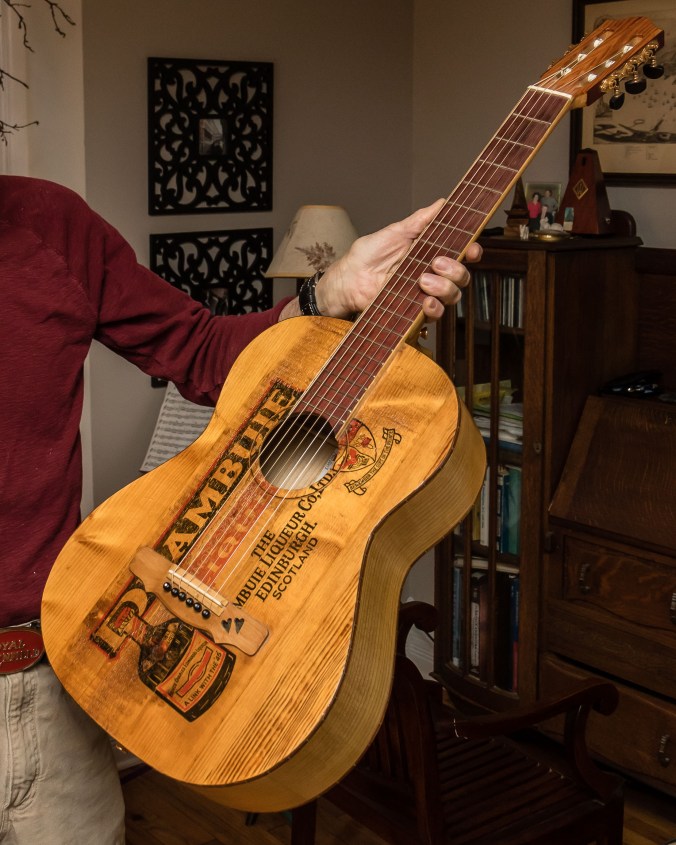
Lovely work, Paul. My great-grandfather, F.A. Requarth, founded the Requarth Lumber Co. on Monument Street in Dayton. In his spare-time he made violins. I have one. I took it to a shop on East Fifth years ago to have it repaired and cleaned. The man who did the work told me “It’s not a very good violin”. I didn’t mind at all, since that’s not the meaning it has for me. You are an inspiration, and I love your house. We live in Bellbrook and drive through Spring Valley once in a while. Also love your Dewar’s Scotch crate.
Best, Donna Gibson
LikeLike